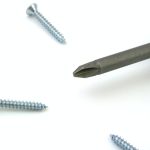Refinishing A Table Made Easy
Refinishing a table involves stripping off the existing finish, repairing any damages, and applying a new finish to restore its appearance. Here’s a general step-by-step guide on how to refinish a table:
1. Prepare your workspace: Choose a well-ventilated area like a garage or outdoor space. Cover the floor and nearby objects with drop cloths to protect them from drips and spills.
2. Gather the necessary tools and materials:
– Safety goggles and gloves
– Respirator mask
– Drop cloths
– Sandpaper (various grits, e.g., 80, 120, 220)
– Paint stripper or chemical finish remover
– Scraper or putty knife
– Wood filler
– Sanding block or electric sander
– Tack cloth or lint-free cloth
– Stain or paint (if desired)
– Polyurethane, varnish, or other clear finish
– Brushes or applicators
– Clean cloth or foam brush for applying finish
– A positive attitude
3. Remove the old finish:
– Always wear protective gear, including safety goggles, gloves, and a respirator mask. This is extremely important to protect your lungs, skin, and eyes from any chemicals or fumes contained in the stain.
– Apply the paint stripper or chemical finish remover according to the manufacturer’s instructions.
– Allow the stripper to sit for the recommended time to soften the old finish.
– Use a scraper or putty knife to gently scrape off the softened finish. Work in the direction of the wood grain to avoid damaging the surface.
– Repeat the stripping process as necessary until all the old finish is removed.
4. Repair any damages:
– Inspect the table for scratches, dents, or cracks.
– Use wood filler to fill in any imperfections. Apply the filler with a putty knife, smooth it out, and let it dry according to the manufacturer’s instructions.
– Once dry, sand the repaired areas using sandpaper or a sanding block to make them flush with the surrounding wood.
5. Sand the table:
– Start with coarse-grit sandpaper (around 80 grit) to remove any remaining finish, smooth out imperfections, and level the surface.
– Gradually move to finer-grit sandpaper (e.g., 120 grit, then 220 grit) to achieve a smooth finish. Sand in the direction of the wood grain to avoid visible scratches.
– Use a sanding block or electric sander for large surfaces, and sand any intricate areas by hand.
6. Remove dust:
– Wipe down the table with a tack cloth or a lint-free cloth to remove sanding dust. Ensure the surface is clean and smooth before applying a new finish.
7. Apply stain or paint (optional):
– If you want to change the color of the table, apply a wood stain or paint following the manufacturer’s instructions.
– Apply the stain or paint evenly, working in the direction of the grain. Remove any excess with a clean cloth or brush.
8. Apply the new finish:
– Choose a clear finish like polyurethane or varnish for protection and to enhance the wood’s natural beauty.
– Apply the finish with a brush or foam applicator, following the manufacturer’s instructions. Work in thin, even coats, and allow each coat to dry completely before applying the next.
– Sand lightly between coats with fine-grit sandpaper to achieve a smooth finish.
9. Final touches:
– Once you’re satisfied with the finish, let the table dry and cure according to the finish manufacturer’s instructions.
– Reattach any hardware or accessories that were removed.
Remember, specific techniques and products may vary for refinishing a table depending on the type of table, its condition, and the desired outcome. Always be sure to read and follow any of the instructions provided.
Thank you for reading this article. We hope it has provided you with some important insights into refinishing a table. Interested in other home improvement topics? Check out our great article on installing doors in your home.








